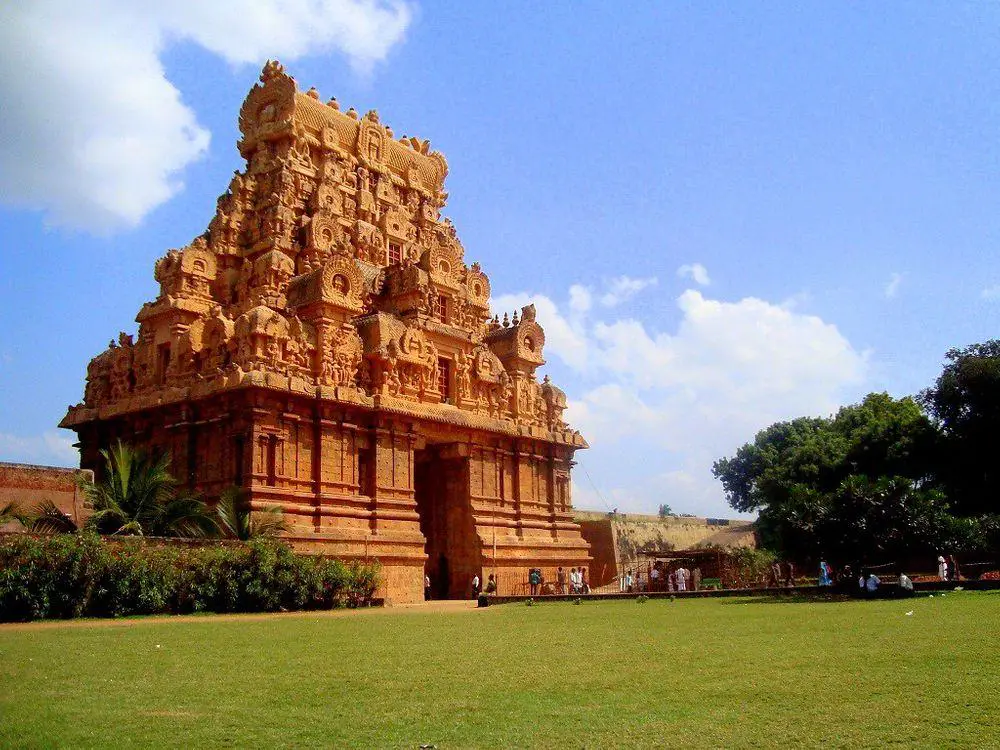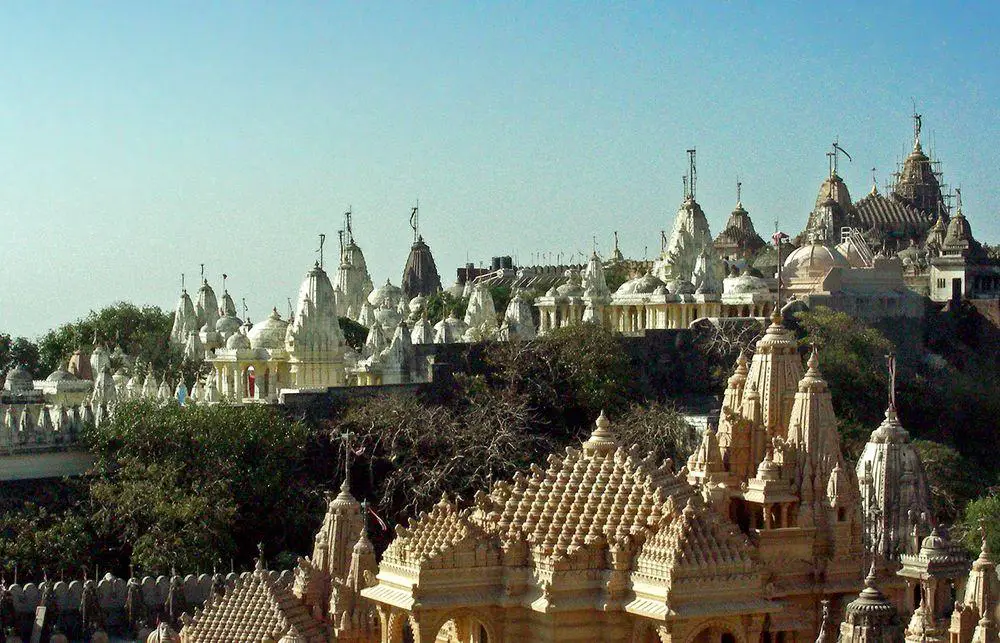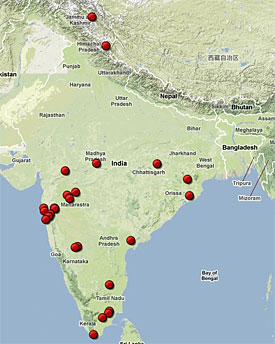World 🢖 Asia 🢖 India 🢖 Tamil Nadu
Jain shrines 🢔 Religious architecture 🢔 Architectural wonders 🢔 Categories of wonders
Wonder
Thirunadhikkara Cave Temple
 In short
In short
One of the earliest examples of Kerala style frescoes is located in rock-cut cave – Thirunadhikkara Cave Temple.
 41.8%
41.8%
GPS coordinates
Alternate names
Age
Religion
Map of the site
If you see this after your page is loaded completely, leafletJS files are missing.
 In detail
In detail
According to the legends, this rock-cut chamber was made in the 7th century AD by a Jain ascetic named Veeranandi who came here from Thirunarunkondai Melappalli.
The cave is made in the large, oblique wall of the cliff and is ascended by a flight of some 60 stone-cut steps. The rock-cut temple itself is small, the facade has two columns and two pilasters. Nowadays, to prevent vandalism, the entrance is closed behind bars.
Jains were here until around the 9th century AD when the cave was taken over by Hindus.
In the 9th – 10th c. AD cave was decorated with paintings. Hindu painters first sketched outlines and then colored powders were sprinkled.
Now only hazy outlines of once beautiful frescoes remain. Drawings are considered to represent perfect early examples of typical Kerala (earlier this cave was located in Kerala) style which later has been applied in numerous temples and palaces. At the same time drawings resemble the famous drawings in Sittanavasal Cave.
Paintings illustrate scenes from the stories of the Ramayana and Mahabharata. Among the other figures here are seen Shiva, Parvati, and Ganapathi. The technique of drawing resembles Buddhist tradition.
The cave contains 11 stone edicts, relating to the Sadhaya festival of the Imperial Cholas in the 11th century AD. Here have been found also inscriptions on copper plates from the 9th century – back then here ruled Venad king.
The presiding deity of the temple is Thiru Nanthikeswarar. To the south, there is located active temple built in later times.
References
- A Cave and a Chronicle, The Hindu, 12 Nov. 2007. Accessed on May 12, 2010.
Thirunadhikkara Cave Temple is included in the following article:
 Linked articles
Linked articles

Wonders of India
India is the seventh-largest country in the world by area, and, naturally, such a large area contains a huge amount of exciting attractions…
Wondermondo considers that India is the second richest center of architectural heritage in the world after Europe and maybe no single country in the world can match it in this respect.

Hindu shrines
Hinduism is one of the oldest religions – possibly the oldest one among contemporary religions and Hindu temples belong to the most impressive religious buildings in the world.

Jain shrines
Jainism originated in India around 840 BC and is well-known as a religion heralding respect and compassion to all living beings of the world and promoting non-violence and constant spiritual development.
Jain temples belong to the most ornate and impressive buildings in the world. In their construction, there are used stones with intricate, refined carvings.
 Recommended books
Recommended books
Indian Painting: From Cave Temples to the Colonial Period
From refined portraits of resplendent maharajas to earthy depictions of divine rogues cavorting with milkmaids, Indian miniature paintings depict the world as it should be: radiant, plentiful and passionate. These manuscript illustrations combine vibrant color with exquisite delicacy, offering immediate impact while also rewarding lengthy examination.
History of Tamil Nadu
Tamils have a long history starting from the pre-historic period. Retracing their history is facilitated by various sources. One-third of India’s epigraphical sources pertain to Tamil Nadu and one of the dynasties of Tamil Nadu – the Pandyas – had the privilege of continuous rule from third century B.C. to sixteenth century A.D. It is a unique accomplishment in the annals of history since very few dynasties in the world have reigned for such a long time.



